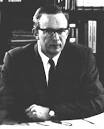| Date | Text | |
|---|---|---|
19 Nov 1918

Charles Richard Van Hise |
death Charles Richard Van Hise Died 19 Nov 1918 at age 61 (born 29 May 1857). U.S. geologist who conducted basic geological studies of the Precambrian (570,000,000 to 4,600,000,000 years ago) formations of the Lake Superior region, particularly the iron ores in these formations. These studies were useful for the economic exploitation of the vast iron-ore fields found in that region. He was very interested in, and wrote about, the conservation of natural resources. He regarded soil conservation as "the basal asset of the nation," followed by the "economic mining and use of coal, the conservation of the forests, and the use of metals with the minimum waste." |
|
19 Nov 1918

Hendrik Christoffel Van de Hulst |
birth Hendrik Christoffel Van de Hulst Born 19 Nov 1918; died 31 Jul 2000 at age 81. Dutch astronomer who predicted theoretically (1944) that in interstellar space the amount of neutral atomic hydrogen, which in its hyperfine transition radiates and absorbs at a wavelength of 21 cm, might be expected to occur at such high column densities as to provide a spectral line sufficiently strong as to be measurable. Shortly after the end of the war several groups set about to test this prediction. The 21-cm line of atomic hydrogen was detected in 1951, first at Harvard University followed within a few weeks by others. The discovery demonstrated that astronomical research, which at that time was limited to conventional light, could be complemented with observations at radio wavelengths, revealing a range of new physical processes. |
|
19 Nov 1918

Hendrik C. van de Hulst |
birth Hendrik C. van de Hulst Hendrik C. van de Hulst (died 2000), astronomer. |